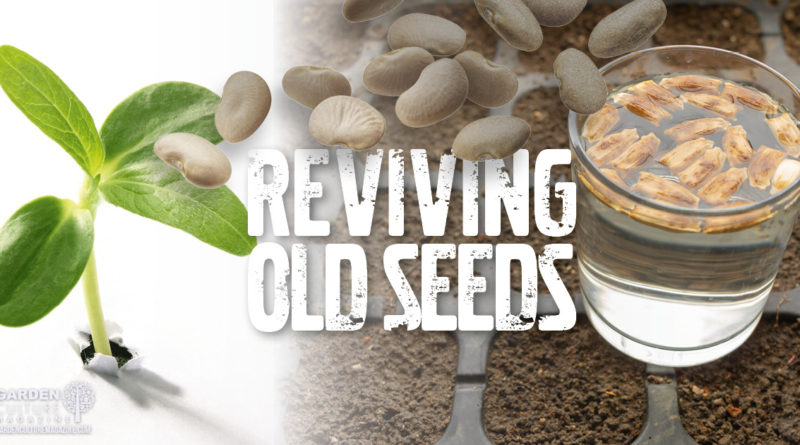Got Old Seeds? Help Them Sprout With These Tips And Tricks
There’s something exciting about finding some long-forgotten, rare seeds. Once you have them, the challenge is to revive those genetics, especially considering they’ve been sitting in someone’s tobacco tin, basement, or garage for decades. While they look like they could germinate, you don’t have many, and you want to make sure they sprout.
Is It Possible?
Yes! Even seeds that are thousands of years old can germinate. But proper pre-treatment is essential, and the older the seed, the less energy it has left in storage.
Seeds from annual plants aren’t often designed to last many years, part of what makes the germination process so tricky. With each trip around the sun, energy declines. Eventually, the embryo doesn’t have any juice left to break the seed coat and push through the soil to the surface.

To an extent, we can minimize this through proper storage in cool and dry environments. But even still, the passage of time inevitably wins.
Clean Beans
Aggressive tactics are often needed to give the seed a fighting chance. First, the seeds will need to be cleaned, minimizing any potential mold spores and pathogens that may be on the seed surface. Soaking the seeds in a 1 or 2% hydrogen peroxide solution for a few minutes cleans effectively while also providing slight chemical scarification to the seed coat, which has likely hardened over time.
Chemical Scarification?
For germination to occur, the embryo needs to be able to exchange oxygen with the outside world. The issue? Seed coats tend to harden over time, which prevents them from properly absorbing water and oxygen. While H202 can provide a chemical roughing, it’s often necessary to get a bit more surgical.
Mechanically scarifying seeds can be as simple as lightly sanding the micropyle (edge) with a piece of sandpaper (being careful not to go too far), or knicking a notch out of the seed coat with a utility knife. Cracking the seed coat carefully between a pair of forceps is another method. Many old-timers used to crack the seeds between their teeth!
Scrubbing In
Sometimes, you have to perform surgery to get a seed to germinate. Do this by entirely removing the seed coat and directly germinating the embryo by placing it on top of a quality propagating media kept evenly moist in a controlled environment. Steady hands and magnification are a must for this; small seeds mean delicate work! Often, this step alone is enough for seeds and should improve success rates.
Rejuvenation
To further ensure the best chance of germination, we can attempt to replenish some of the energy and hormones that have been lost over time. Soaking seeds in a diluted solution of blackstrap molasses or even sugar water will bolster carbohydrate levels. When added to the mix, kelp, fulvic acid, B vitamins, alfalfa meal, coconut water, and malted grain (especially barley) provide a considerable array of biocatalysts, including natural enzymes to wake the tired embryos and get them moving. Coconut water is notably used in plant tissue culture as food stock, which proves very useful for these purposes. Germination is an enzyme-driven process, which can be naturally supplemented by the above ingredients.
Once the seeds are ready, place them directly into a quality, organic soil for germination, rather than on a paper towel. The latter makes the seeds more prone to pathogens. Good soil should be brimming with healthy microbes. Direct planting also avoids injury to the initial taproot’s very fine feeder hairs during transplanting, further enhancing survival rates.
Don’t give up on older seeds; try to germinate them to see if they are as good as you remember.
Cody J Garrett Tait
Cody is the owner of High Powered Organics and a second-generation Australian grower with more than a decade of experience in the horticulture industry. Cody works closely with growers locally and abroad, creating organic solutions for high output cropping. He achieves maximum results by combining aspects from permaculture, biodynamic farming, and Korean natural farming techniques. Cody’s main focus is finding natural, and sustainable ways to produce high-quality plants with a minimum of input.
Latest posts by Cody J Garrett Tait (see all)




